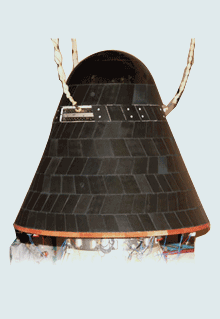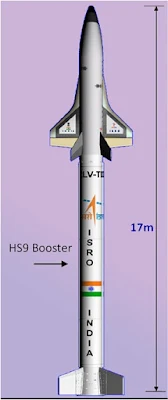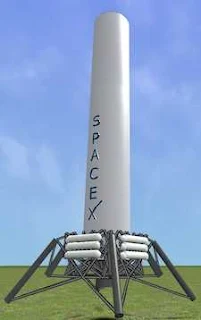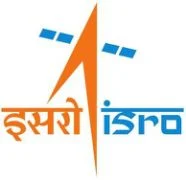Welcome To INDIAN SPACE NEWS
today we will learn about the experiment.
Which gave birth to Gaganyaan.
About SRE-1
This is my 3d render of the Space Capsule Recovery Experiment (SRE – 1) was a capsule weighing 555kg it was sent into orbit this capsule was special because it was India's 1st thing sent into orbit and did a controlled recovery.
Spacecraft Design
As you can see solar panels and 8 thrusters. Above you can see the tiles and cone. Let's discuss this in detail a bit its base diameter is about 2m height is about 1.6m nose cone base is 0.5m below you have solar panels for power 8 thrusters to control the capsule middle has a hatch for parachutes and a balloon, will explain properly at the end the tiles are silica tiles these tiles will protect during reentry a carbon-phenolic nose cone on top which can bear high temps.
why was this experiment made?
ISRO wanted to prove it can do a controlled reentry... a hypersonic reentry and that they can precisely land a capsule at its spot so from launch to recovery they also wanted to prove reliability and also show that they are ready for a human spaceflight program these all tech is used in the capsules that humans will be flying on in our case the Gaganyaan Capsule now this was in 2007!
Launch Vehicle
It was launched on PSLV C7 in Jan 2007, this was launched with a Cartosat Satellite and another 2 commercial sat's it was a dual adapter launch it was in orbit for around 12 days it had 2 experiments inside it one was a metal-related crystal experiment and a nano-particle experiment the experiments were a success the papers relating to them were behind a paywall.
Reentry
interesting indeed then time came to deboost it so the engines were fired in a retrograde direction (opposite) then it rotated again to bring the nose cone forward so the cone will bear reentry heat it reentered well they wanted to test new things during this phase when a capsule is rendering and when plasma starts forming ... there is a communication blackout can't receive or send signals there was some tech implemented for this like... during a blackout, it will store all info locally and... as soon as it comes out of the plasma phase it will.... it will relay back all data it did all this successfully, it had to seperate 3 parachutes... 2 drogues shoots and a main parachute it did that successfully and finally splashed down in the bay of Bengal it inflated its floater device or it would sink it remained afloat another interesting thing is it released a fluorescent dye in the water that makes searching via air easy that was the visual part it also turned on its rescue beacon hence Indian Navy and coast guard could locate it as soon as it was located divers dived and checked it... then attached floaters... then it was put on a boat and brought back this was very important and sure many people haven't even heard about it ever heard of SRE-1.
where was its tech used?
The carbon-phenolic nose cone and silica tiles can be seen on the RLV have a look at many things in use and will be used on Gaganyaan its heat shield will mostly be different though maybe pica heat shield I found the platform very interesting look we will be able to do the experiment's on gaganyaan no doubt that will be expensive and send limited experiments and it won't happen frequently as well but this capsule is small, 2m dia and 555kg weights maybe.
we can make it lighter with new tech?
A slightly smaller capsule can be launched on the SSLV too... I feel if this platform was active today ... Indian institutes would have a unique microgravity research platform, it would be unique today as well its not like ISRO stopped it immediately they had planned SRE-2 and SRE-3 which were better but never took off they got canceled then gaganyaan came into focus my question to you is .... should ISRO bring this back? just for microgravity experiments not really that big scale it up/down ..Improve it a whole bit. what do you think? when gaganyaan will launch with Indians, everyone will be happy but don't forget this, this was the start to consider.









